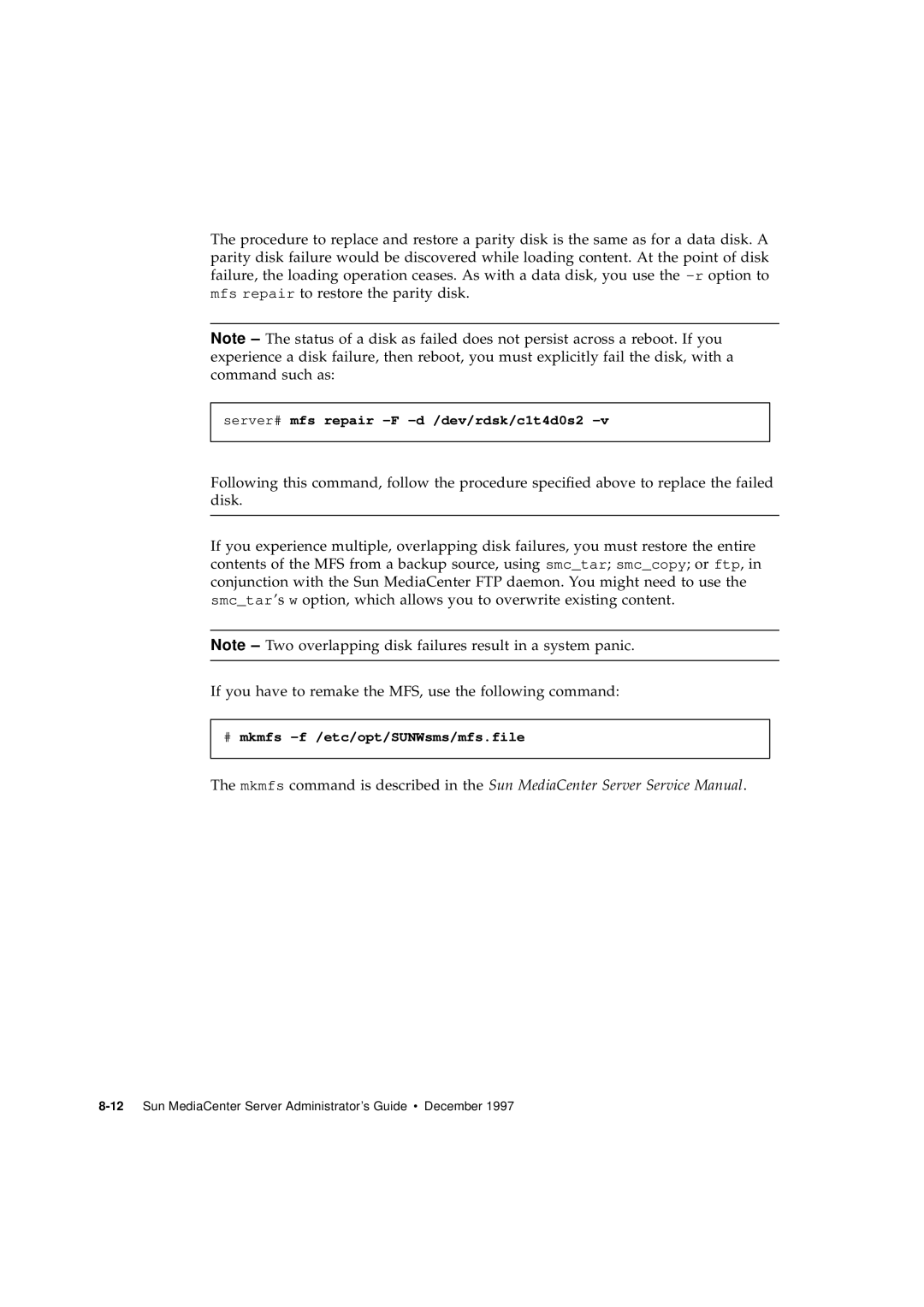
The procedure to replace and restore a parity disk is the same as for a data disk. A parity disk failure would be discovered while loading content. At the point of disk failure, the loading operation ceases. As with a data disk, you use the
Note
server# mfs repair -F -d /dev/rdsk/c1t4d0s2 -v
Following this command, follow the procedure specified above to replace the failed disk.
If you experience multiple, overlapping disk failures, you must restore the entire contents of the MFS from a backup source, using smc_tar; smc_copy; or ftp, in conjunction with the Sun MediaCenter FTP daemon. You might need to use the smc_tar’s w option, which allows you to overwrite existing content.
Note
If you have to remake the MFS, use the following command:
#mkmfs
The mkmfs command is described in the Sun MediaCenter Server Service Manual.
